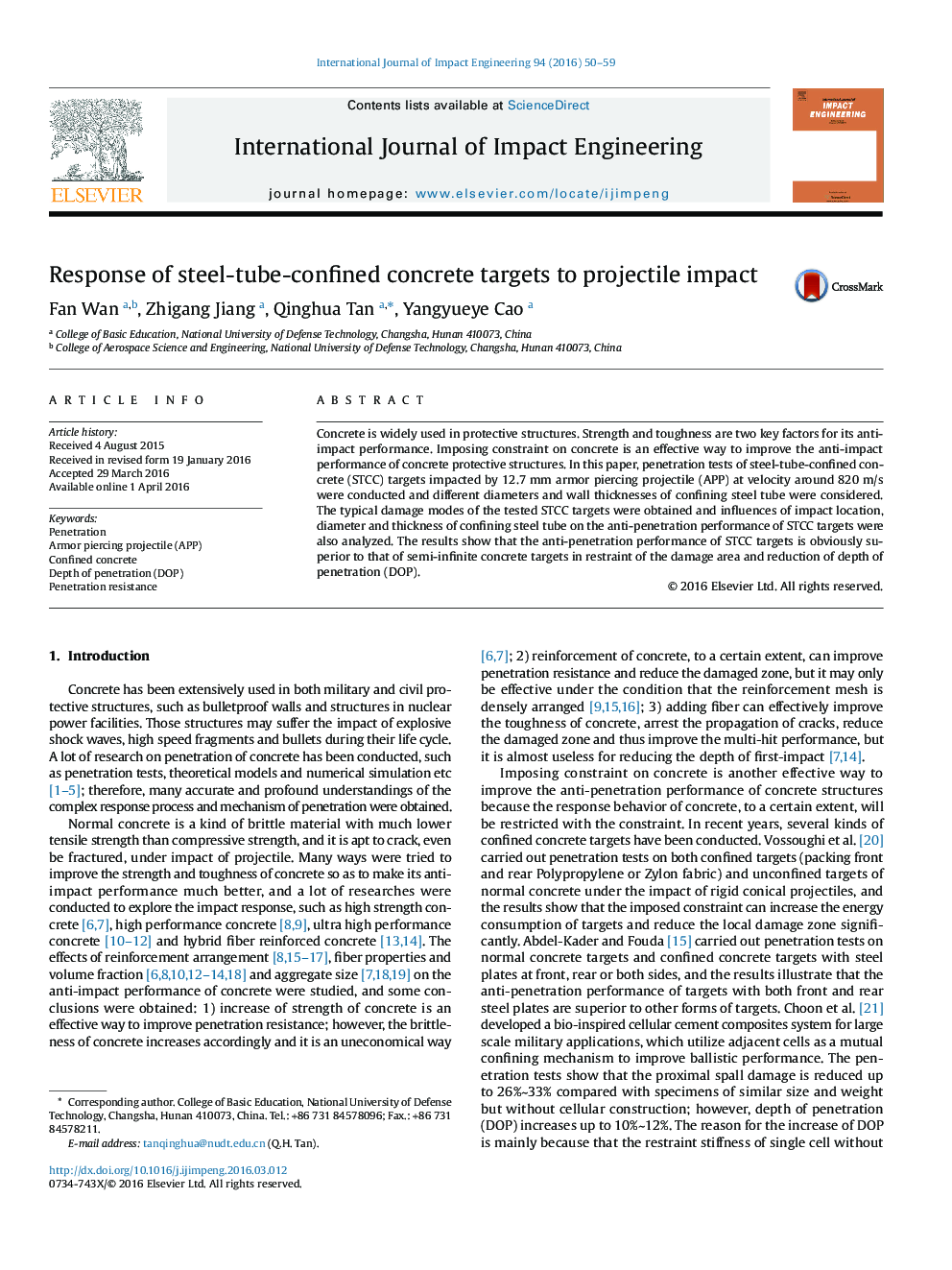| Article ID | Journal | Published Year | Pages | File Type |
|---|---|---|---|---|
| 782708 | International Journal of Impact Engineering | 2016 | 10 Pages |
•Small diameter steel-tube-confined concrete targets impacted axially by 12.7 mm APP were tested, and the typical damage modes and parameters were obtained.•Influences of impact location, diameter and wall thickness of confining steel tube on the bullet-proof performance of steel-tube-confined concrete targets were analyzed.•Penetration resistance of steel-tube-confined concrete targets against 12.7 mm APP was proposed as a modified Forrestal formula, and a fitted formula for the relationship between empirical constant of penetration resistance coefficient and restraint stiffness was developed.
Concrete is widely used in protective structures. Strength and toughness are two key factors for its anti-impact performance. Imposing constraint on concrete is an effective way to improve the anti-impact performance of concrete protective structures. In this paper, penetration tests of steel-tube-confined concrete (STCC) targets impacted by 12.7 mm armor piercing projectile (APP) at velocity around 820 m/s were conducted and different diameters and wall thicknesses of confining steel tube were considered. The typical damage modes of the tested STCC targets were obtained and influences of impact location, diameter and thickness of confining steel tube on the anti-penetration performance of STCC targets were also analyzed. The results show that the anti-penetration performance of STCC targets is obviously superior to that of semi-infinite concrete targets in restraint of the damage area and reduction of depth of penetration (DOP).
